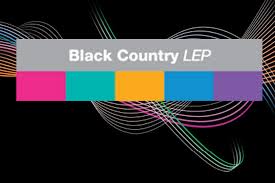Black Country leads Midlands for growth
New official figures have confirmed that the Black Country heads the table for growth in the Midlands region and it was the second highest performer amongst national Local Enterprise Partnership areas for economic growth in 2013.
Stewart Towe, chairman of the Black Country Local Enterprise Partnership
The latest data from the Office for National Statistics reveals that for the Black Country LEP area as a whole, the economy grew by 4.5 per cent in 2013, well above the national average of 3.3 per cent.
Black Country LEP chairman Stewart Towe said: “These figures showing the Black Country is the second highest performing out of the 39 LEP areas for economic growth are evidence of the continuing strong transformation of our local economy.
“The Black Country LEP and its partners will continue to boost business growth and build on our unique position as the UK’s manufacturing heart to ensure high quality products are made in the Black Country and sold around the world.”
The figures show that the economic output for the Black Country LEP area as a whole in 2013 totalled £19.5 billion.
Over the period 2008-2013, taking in the start of the economic downturn in the UK, the Black Country partnership was ranked 14th out of the 39 LEP areas in the UK with 2.4 per cent growth.
Gross Value Added, which is the official measure of economic output, per head currently stands at £16,958 in the Black Country which is £7,133 behind the national average.
However, the Black Country was ranked 9th of 39 LEPs in terms of the increase in GVA per head in the period 2008-2013.
A detailed analysis of the Black Country’s economic performance will be presented at the Brierley Hill-based Black Country Consortium’s 2015 annual symposium that is taking place on Thursday, March 19, at Dudley Evolve in Tower Street in Dudley town centre from 4pm to 5.30pm.
The top five LEP areas which achieved the highest annual growth rate in 2013 were:
1. Greater Manchester 4.6 per cent
2. Black Country 4.5 per cent
3. Greater Birmingham and Solihull 4.3 per cent
4. South East Midlands 4 per cent
5. London 4 per cent
(Data source: Office for National Statistics)







